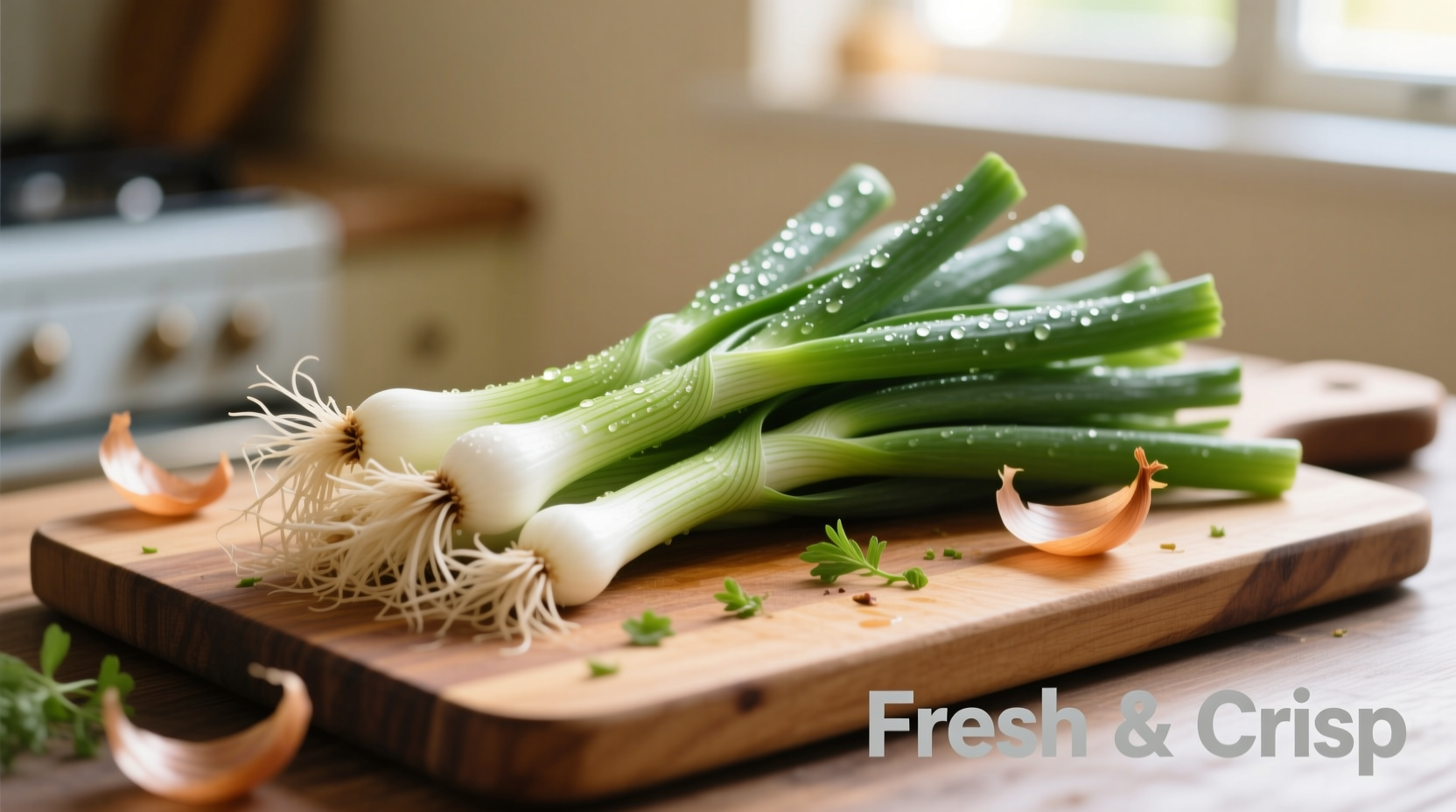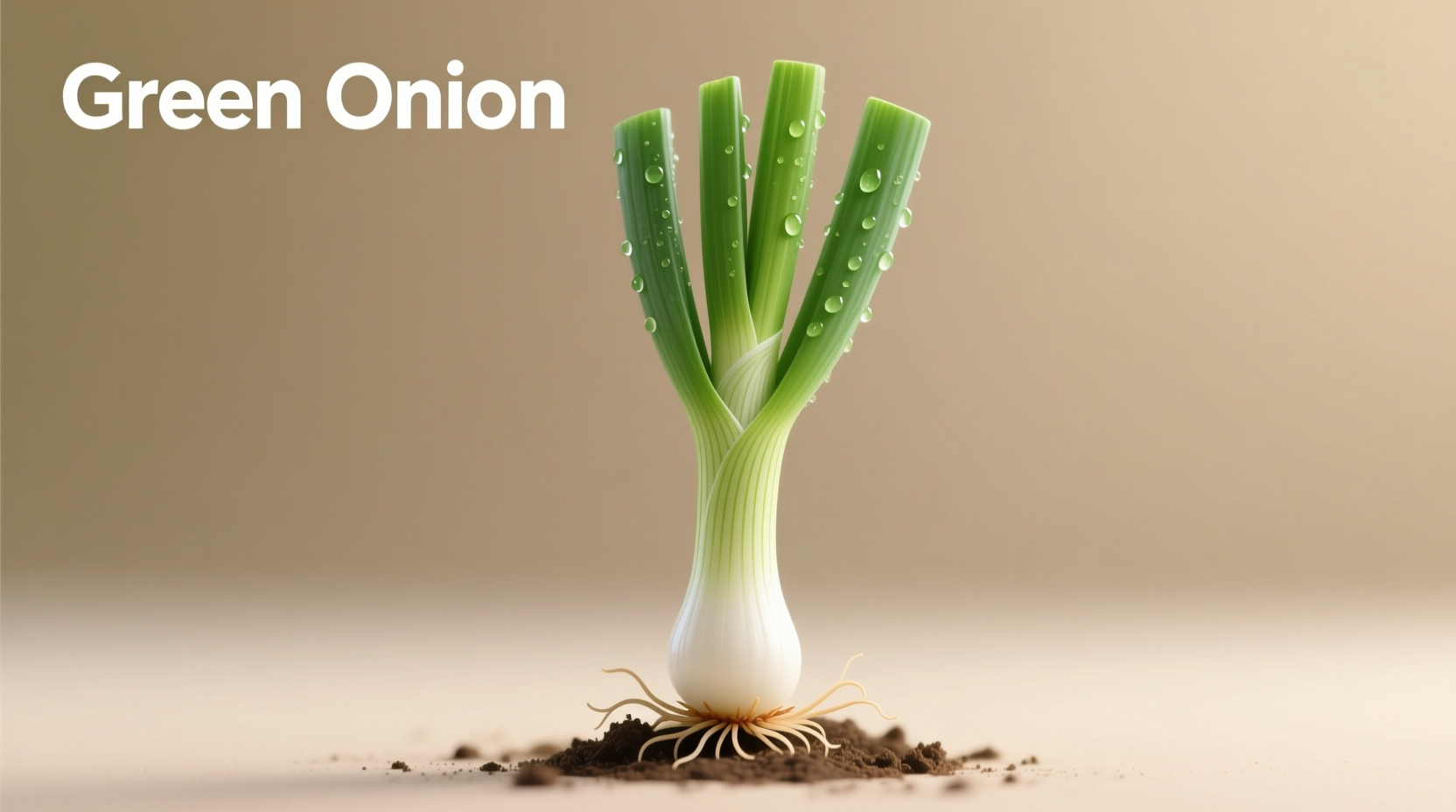Clearing Up the Confusion: What You Need to Know First
When you're standing in the grocery store wondering whether to grab scallions or green onions, you're facing a terminology puzzle, not a produce dilemma. Professional chefs and home cooks across North America use these terms interchangeably for the same vegetable: Allium fistulosum. This young onion variety never develops a large bulb, making it perfect for raw applications and quick cooking.
According to the USDA National Nutrient Database, both names refer to the same nutritional profile—packed with vitamin K, vitamin C, and antioxidants. The persistent confusion arises from regional naming preferences rather than any actual difference in the plant itself. Understanding this fundamental fact saves you time at the market and prevents recipe mishaps.
How to Identify Them in the Produce Section
Whether labeled as scallions or green onions, look for these identifying characteristics:
- Slender white base (about 1-2 inches) without a developed bulb
- Vibrant green hollow stalks
- Thin diameter (typically under 1/2 inch)
- Fresh appearance without yellowing or wilting
Don't be fooled by spring onions, which are often confused with scallions. Spring onions have a more developed, rounded bulb and are harvested later in the growing cycle. This distinction matters for cooking applications where texture and flavor intensity differ.
| Feature | Scallion/Green Onion | Spring Onion |
|---|---|---|
| Bulb Development | No bulb or tiny bulb | Noticeable round bulb |
| Flavor Intensity | Mild, fresh onion flavor | Stronger, more pungent |
| Harvest Time | 60-80 days after planting | 90-100 days after planting |
| Best Culinary Uses | Raw garnishes, quick sautés | Grilling, roasting, caramelizing |
Regional Terminology Differences Explained
The scallion vs green onion naming confusion follows distinct regional patterns across North America. According to linguistic research from the University of Pennsylvania's Language Log, "scallion" predominates in Northeastern US markets, while "green onion" appears more frequently in Western and Southern grocery stores. Canadian markets show mixed usage, with "scallion" more common in Quebec-influenced regions.
This regional variation explains why many home cooks believe they're different ingredients. Food historians note that the term "scallion" entered English from the French "échalote," which originally referred to a different onion variety (shallots), further complicating the terminology landscape.

Practical Cooking Applications
Knowing that scallions and green onions are identical allows you to confidently follow any recipe. Professional chefs like Antonio Rodriguez emphasize using both parts properly:
White Base vs Green Stalks: Different Flavors, Different Uses
- White portion: More pungent, ideal for sautéing at the beginning of cooking (like in stir-fries)
- Green portion: Milder flavor, perfect for garnishing finished dishes (soups, tacos, baked potatoes)
When substituting in recipes, remember that scallions/green onions provide a much milder flavor than regular onions. For equivalent onion flavor, you'll need approximately three times the quantity of scallions compared to a yellow onion.
Storage Tips for Maximum Freshness
Proper storage extends the life of your scallions/green onions significantly. The University of California Cooperative Extension recommends:
- Trim roots and store upright in a glass with 1 inch of water
- Cover loosely with a plastic bag in the refrigerator
- Change water every 2-3 days for up to 2 weeks of freshness
- For longer storage, chop and freeze in olive oil cubes
Avoid storing them near ethylene-producing fruits like apples or bananas, which accelerate spoilage. Properly stored, scallions maintain their crisp texture and fresh flavor significantly longer than many cooks realize.
Nutritional Benefits You're Getting
Whether you call them scallions or green onions, you're adding valuable nutrients to your meals. According to USDA FoodData Central, one cup of chopped scallions provides:
- 270% of your daily vitamin K needs
- 32% of recommended vitamin C
- Significant amounts of folate and vitamin A
- Only 32 calories per cup
These allium vegetables contain organosulfur compounds associated with cardiovascular benefits and anti-inflammatory properties. Unlike mature onions, they're gentler on digestion while still providing these health advantages.
Common Recipe Substitutions
When your recipe calls for scallions but you only have green onions (or vice versa), relax—they're identical. More challenging is substituting when you have neither. Here's what works:
- Chives: Use 1:1 ratio, but expect milder flavor (best for garnishes)
- Leeks: Use white part only, 1:1 ratio after cooking (stronger flavor)
- Shallots: Use half the amount (more intense flavor)
- Red onion: Use 1/3 the amount, soak in water first to reduce sharpness
Remember that raw substitutions work differently than cooked ones. For raw applications like salads or garnishes, chives make the best substitute. For cooked dishes, leeks or shallots provide closer flavor profiles.
Why This Confusion Persists
The scallion/green onion terminology mix-up continues due to several factors:
- Marketing practices: Grocery chains use different terms regionally
- Historical usage: "Scallion" originally referred to shallots in some contexts
- Culinary tradition: Professional kitchens often use "scallion" while home recipes say "green onion"
- Language evolution: Terms shift over time without clear standardization
Food linguist Dan Jurafsky notes in his book "The Language of Food" that produce terminology often reflects historical trade routes and immigrant communities, explaining why certain terms dominate in specific regions. This linguistic evolution continues today as food culture becomes increasingly interconnected.











 浙公网安备
33010002000092号
浙公网安备
33010002000092号 浙B2-20120091-4
浙B2-20120091-4